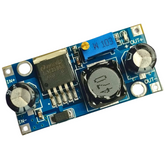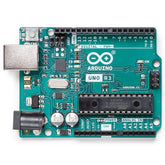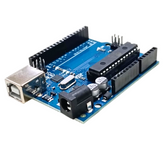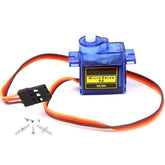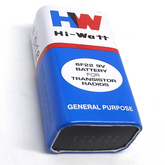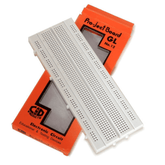How to Use DC to DC Buck Converter LM2596
Summary
Discover the incredible capabilities of the LM2596 DC-to-DC Buck Converter in our latest blog post! Learn how to harness its power by exploring the essential supplies needed and gaining a clear understanding of the pinout overview. Unleash your creativity as we delve into adjusting the output and explore its impressive current rating and high current protection. Plus, we unveil the secret to powering both a 6V motor and a 5V controller from a single source. Don't miss out on our expert tips for efficiently powering 5V and 3.3V devices simultaneously. Read now to revolutionize your power management game!
Supplies Required:
- LM2596 DC-DC Buck Converter
- Arduino UNO
- Servo motor.
- Input voltage source (e.g., 9V, 6V battery)
- Output load (e.g., 6V, 5V, or 3.3V device)
- Breadboard and jumper wires for testing and prototyping
Pinout Overview:
The LM2596 DC-DC Buck Converter has four main pins:
- (IN+) -> The red wire from the battery (or other power source) is connected here; it is either VCC or VIN (4.5V - 40V)
- (IN-) -> The black wire from the battery (or other power source) is connected here.
- (OUT+) -> The positive voltage of the power distribution circuit or a powered component is connected to OUT+ here
- (OUT-) -> Here, we attach a powered component's ground to the power distribution circuit.

Adjusting Output:
There are multiple methods to customize the output of a DC-DC buck converter, like the LM2596, to match your specific requirements:
- Using a potentiometer: It enables you to conveniently adjust the output voltage of the LM2596. This is achieved by connecting the potentiometer to the converter's feedback pin and changing the resistance on the pin to modify the output voltage accordingly.
- Using a voltage divider: Modifying the output voltage can also be achieved by utilizing a voltage divider circuit linked to the converter's feedback pin. By adjusting the resistance ratio within the voltage divider circuit, you can change the output voltage accordingly.
- Using a digital control: Certain models of the LM2596 come equipped with a digital control pin that allows for adjusting the output voltage via a microcontroller or other digital device.
- Using the external resistors: The LM2596 output voltage can also be adjusted by changing the values of the external resistors connected to the feedback pin.
When modifying the LM2596's output voltage, it is crucial to guarantee that the output voltage remains within the secure operating parameters of both the device and the load it is linked to.
Also, it's recommended to check the datasheet of the specific version of the LM2596 for more information about the recommended values for the external components and the control methods.
It's important to note that, when adjusting the output voltage of the LM2596, you should also ensure that the output voltage stays within the safe operating range of the device and the load connected to it. Also, it's recommended to check the datasheet of the specific version of the LM2596 for more information about the recommended values for the external components and the control methods.
Current Rating:
The current rating of a DC-DC buck converter, such as the LM2596, refers to the maximum amount of current that the device can handle without getting damaged. The specific current rating of the LM2596 can vary depending on the version, but most versions have a maximum output current rating of 3A.
It's noteworthy that the LM2596's current rating is not continuous, but rather a peak rating. This indicates that the device can withstand a short-duration peak current of 3A, and its continuous current rating is typically lower. Furthermore, as the output current rises, the device's power dissipation also increases. Therefore, it's critical to ensure that the device is adequately cooled and that the power dissipation does not surpass the device's rating.
High Current Protection:
The high current protection capability of a DC-DC buck converter, such as LM2596, is a safety mechanism designed to safeguard the device from harm caused by excessive current flowing through the output terminals. The LM2596 has an over-current protection (OCP) feature that is designed to protect the device in case the output current exceeds the maximum rated current.
The OCP feature of the LM2596 typically works by monitoring the output current and comparing it to a reference value. If the output current exceeds the reference value, the OCP circuit will trigger, shutting down the converter and protecting it from damage. The OCP feature is usually implemented by using a current-sense resistor placed in series with the output of the converter. The current flowing through the resistor creates a voltage drop across it, which is then used as a feedback signal for the OCP circuit.
Powering 6V Motor and 5V Controller from a Single Source:
The LM2596 can be used to power both a 6V motor and a 5V controller from a single input voltage source. By adjusting the output voltage to 6V for the motor and 5V for the controller, they can both be powered from the same input source.

Powering 5V and 3.3V Devices from a Single Source:
The LM2596 can also be used to power multiple devices with different voltage requirements. By adjusting the output voltage to 5V for one device and 3.3V for another, they can both be powered from the same input source.

Conclusion:
The LM2596 DC-DC Buck Converter is a versatile and useful tool for converting a higher input voltage to a lower output voltage. It can be used to power multiple devices with different voltage requirements from a single source, and has built-in over-current protection for added safety. With the proper supplies and understanding of the pinout and adjustment, you can use this device to meet your voltage requirements.
If you appreciate our work don't forget to share this post and leave your opinion in the comment box.
Please do check out other blog posts about Popular electronics
Make sure you check out our wide range of products and collections (we offer some exciting deals!)



